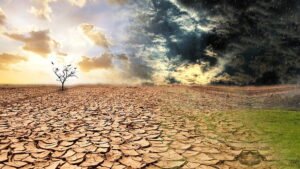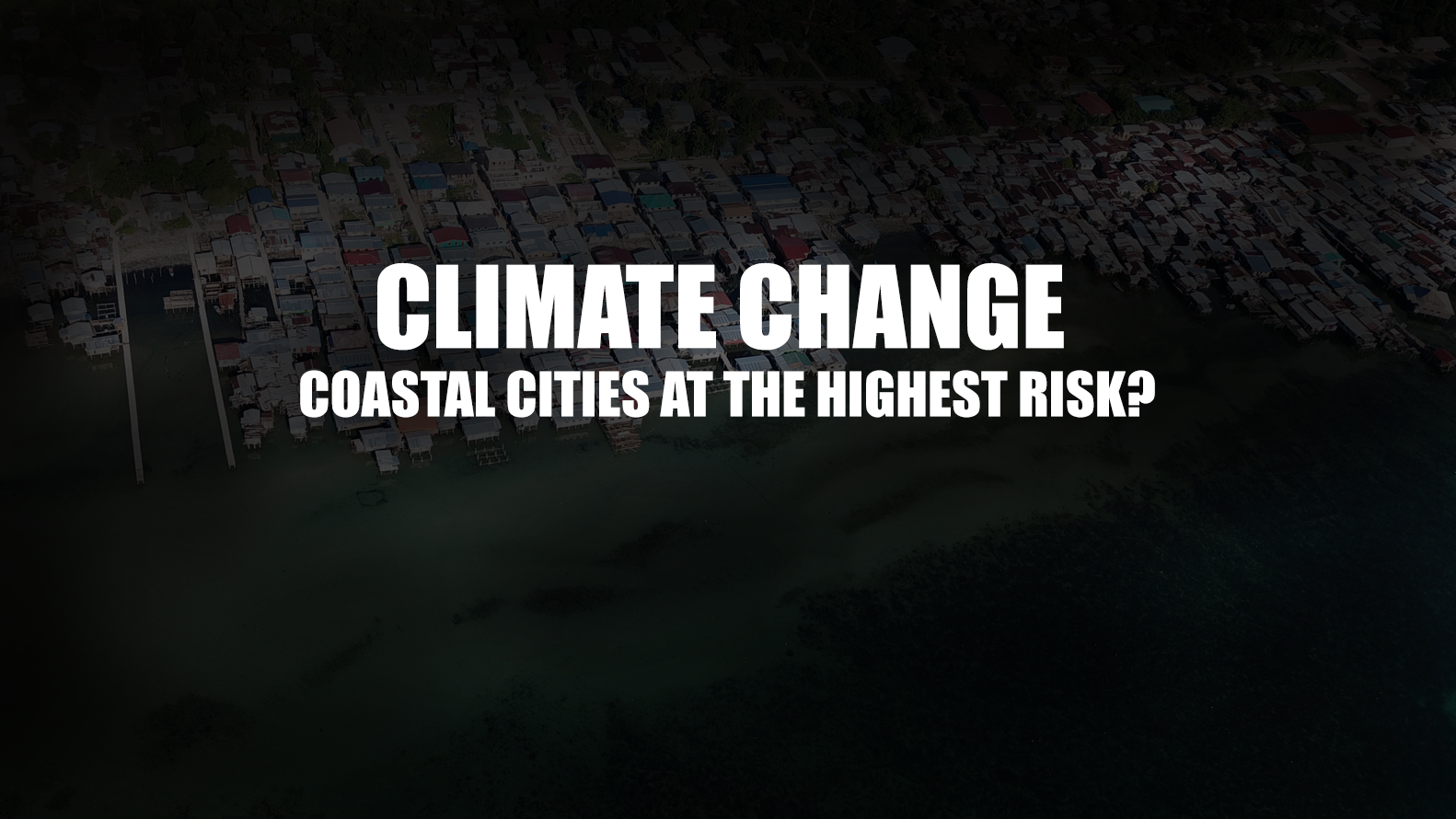The Context:
Rapid urbanization, urban development, climate change, are putting the world’s coastal cities at increasing risk of dangerous and costly flooding damages. The forecast discovered shows that average global flood losses will multiply from $6 billion per year in 2005 to $2 billion a year by 2050. Also, not to forget the sea-level rise and sinking land – global flood damage for major coastal cities will raise $1 trillion a year if cities don’t take steps to adapt.
Cities, home to half of the world’s population supplemented by rapid urbanization, are at the center of this challenge. Frequent storms, increasing temperatures, rising sea levels, changing climates, are the major drawbacks of these vulnerable climates.

According to the Goldman Sachs report, – 40% of the population living within 100 kilometers of a coast, and one in 10 people living in areas less than 10 meters above sea level (New York, Tokyo, and Lagos) could face harmful flooding. At-risk cities include regions that are less than 11 meters above sea level – Miami, Florida, Alexandria, Egypt, Dhaka, Bangladesh, China, and Shanghai — leading to half of the world’s population living in water-stressed areas sooner to 2025.
“The Climate is Changing Why Aren’t We?”
The Impact of Climate Change Globally:
Our world is becoming vulnerable to climate change risks with extreme weather events, deteriorating ecosystems, soil degradation, and increasing water scarcity. Increasing gaps in our understanding of the changes are making it difficult for us to anticipate, react, plan, and adapt to upcoming changes.
Climate change and its impact on livelihoods worldwide will no doubt be one of the most significant issues confronting us in the decade ahead. By various issues, it may be clear that 2020 is our last chance to bring the world together in order to protect our communities and reverse the alarming loss of wildlife.
The drastic change is creating environmental challenges like droughts that are wrecking chalk rivers and wetlands, degradation of natural habitats, deforestation, all leading to the emissions causing climate change. The question still remains, can we stop climate change, and how can innovation technology help?
Yes, it’s true! We can do things to help stop climate change, but obviously, it won’t happen overnight. Unlike many other big problems in life, we know how to fix this – by reducing our use of fossil fuels. According to the Bureau of Labor Statistics, the fastest-growing occupations in the upcoming decade are solar and wind technician. Per unit of energy, for every one job in fossil fuels, you need several jobs in solar. In different sectors, sustainable energy is already cheaper, and certainly cleaner than fossil fuels.
The Most Fragile Situation:
- Amazon rain forest: The most fragile situation because of how the land is being abused combining with climate change. The more the forests are fragmented, the more they dry out and lose the ability to create their own source of rainfall. The change is leading Amazon to turn it into savanna – an ecosystem with far less tree-cover. If ever this happens, the capacity of the forest to absorb heat-trapping carbon dioxide will be lost.
- Permafrost: The frozen ground in the Arctic, the fast and releasing carbon, has been locked up for thousands of years. This year it seems that the threshold from being in the sink, storing carbon, and acting as feedback to warm the Earth even faster.
- Loss of ice: Sea ice in the Arctic and land ice in Greenland and South Pole, it highly accelerating towards loss. Ice helps to cool the Earth’s temperature. The more we lose, the faster the climate heats up.

Ever thought of what adaption looks like? It depends on where you are, ranging from using goats to clear vegetation in California to raising roads in Florida. The following are some ways by which communities are adapting to climate change around the world:
- Prepare for longer, more intense fire seasons: Drier, warmer conditions give rise to more wildfire for the West. Communities have started adapting to reality by putting goats to work for clearing brush. Numerous projects are helping people adapt to the aftermath of fires by offering a small support group for young wildfire survivors to heal.
- Ensure disaster and public health plans for more severe weather: Intense storms and extreme heat have dire impacts on public health. Projects are helping communities to work for updating the infrastructure, real estate, and community planning strategies. The Red Cross, for example, is using climate science to prepare for disasters so it can supply vulnerable communities with food, water, and medical supplies. In Cedar Rapids, Iowa, the city is building levee and floodwall systems, elevating bridges to defend against future flooding. And some cities are coordinating cooling centers and working with unions to protect laborers during extreme weather from health problems.
- A challenge of sea-level rise: Scientists expect that the global sea level would rise between eight inches and 6.6 feet by 2100, threatening low-lying coastal areas. Installing massive drain pipes and pumps, raising roads, and strengthening sea walls putting millions of dollars. In Georgia, volunteers are helping keep the Tybee Island 4H center above water by creating a ‘living shoreline.’ made of oyster shells to provide a buffer against storm surge and erosion.
- Protecting Air quality: Climate change can lead to more tiny particles and allergies in air, which can harm the respiratory and cardiovascular systems.
- Protect farms and the food supply from climate impacts: Temperature swings, prolonged drought, extreme storms, and other climate impacts are threatening long-standing farming practices. Various scientists are investigating systems that will help in addressing drought in developing new crop varieties.
- Prioritize climate justice: Lower-income and other marginalized people are often affected by extreme weather, worsened air pollution, and other climate impacts. Prioritizing adaptation efforts explicitly helps vulnerable populations contributing to a more equitable future.
- Prepare for the managed retreat: Sometimes, people are not able to go home again, whether to a neighborhood lost in a fire or threatened by rising sea levels. The concept of the retreat will supplement these people in adapting to climate impacts.
Communities are now attempting to adapt to climate change, working to reduce the amount of heat-trapping carbon pollution. Commercial buildings have adapted to cut energy use, water use, and transportation emissions by half. For small countries, protection and preparation are essential. Taking into consideration with similar ideas with flood risk in major parts globally will transform the landscape completely.
The future is not far, and if not mitigated, climate change is going to continue to cause more extreme heat waves and droughts. It is painful even to imagine that later in this century, Earth’s equator will become extremely hot and uninhabitable, making it least supportive for people living. Imagine, millions being forced to move to survive. The concern is more widespread migration will create a massive international and security issue. The right time is now, and preparation and protection will save lives and money in the future.
Highlights:
- Coastal cities face a high risk of flooding because of sea level rising due to climate change.
- The global greenhouse gases will hit a new high for 2019 – declared by the World Meteorological Organization.
- The new research has pointed out the costs of flood damage to large coastal cities rising to $1 trillion globally if the cities don’t take steps to adapt.
To know more about Architecture Technology, Stay Tuned. Till then, you can visit the Security Awareness Section for day-to-day cyber attacks and how to prevent them.
Previous Coverage:
- Urban Segregation: Data from 350,000 Smartphones Used
- Beyond Imagination: 21st Century’s Emerging Tech for Architecture & Design
- Design Technology: Are Revit and BIM the same?

